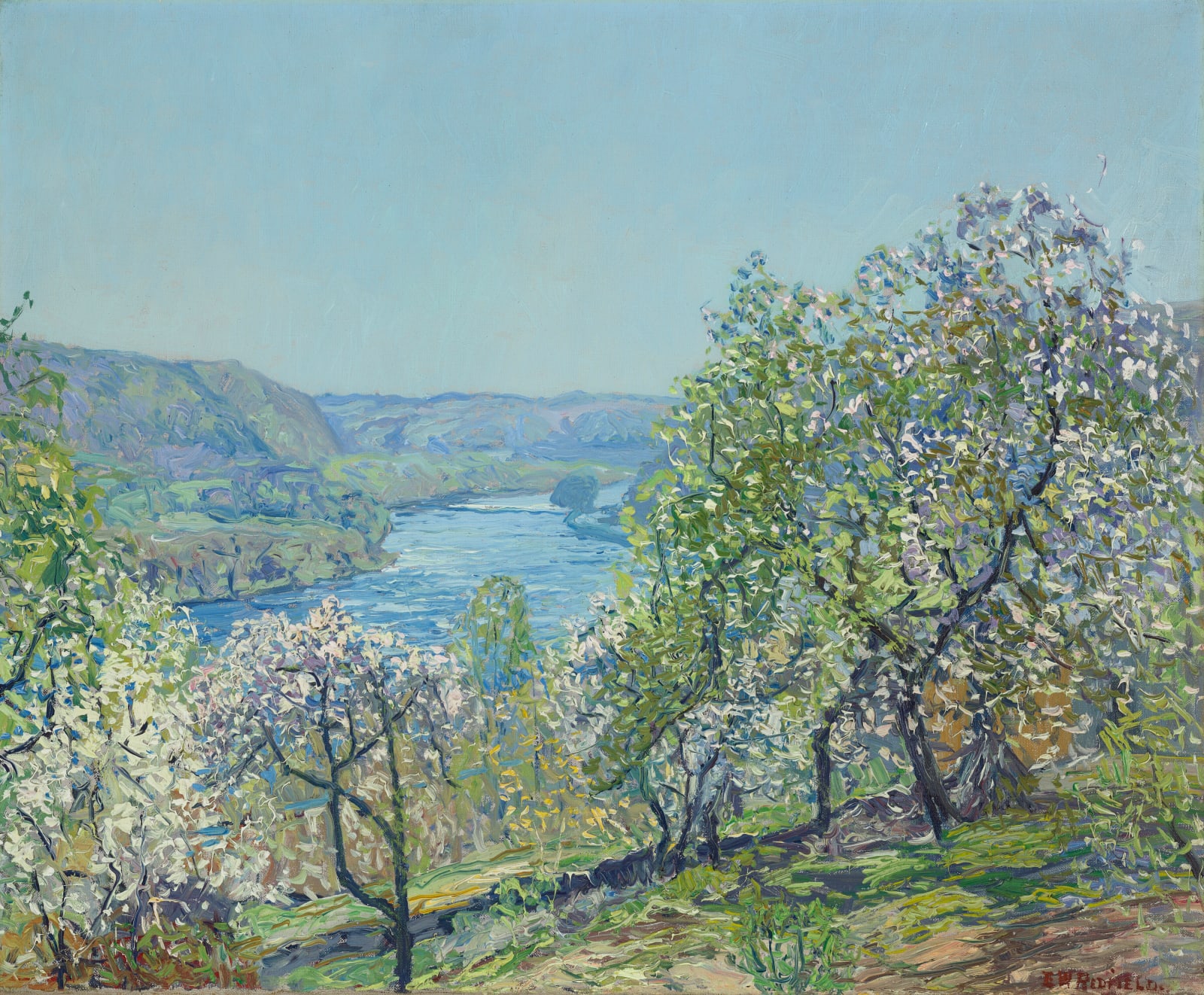Edward Redfield 1869-1965
Framed dimensions: 31 3/4 x 36 3/4 inches
After training at the Pennsylvania Academy of the Fine Arts under Thomas Anschutz, Redfield went to Paris to receive further training at the Acadèmie Julian in the late 1880s or early 90s. Accompanied by Robert Henri, an old friend from his days at the Pennsylvania Academy, Redfield traveled from Paris to the French countryside and the forest of Fountainbleu where he began painting en plein air in the cold of winter.
The plein air tradition pioneered by the French Impressionists was adopted by Redfield in his renderings of the rich and varied landscapes of Bucks County, Pennsylvania. "His paintings were done in the field and straight onto the canvas, and with great rapidity and force." (J.M.W. Fletcher, Edward Willis Redfield 1869-1965: An American Impressionist, His Paintings and the Man Behind the Palette, Lahaska, Pennsylvania, 1996, p. 1). As Redfield himself said: "What I wanted to do was go outdoors and capture the look of a scene, whether it was a brook or a bridge, as it looked on a certain day." (as quoted in T. Folk, Edward Redfield, Allentown, Pennsylvania, 1987, p. 35)
Once he started painting spring scenes, Redfield's most desirable were energetic works, brightly sunlit, with abundant budding trees, such as Hills of Point Pleasant.Rendered with short, thick brushwork and vibrant color, the present work captures the freshness and vitality of a gorgeous spring day in the artist's quintessential style.
Provenance
Grand Central Art Galleries, New York;Private collection, New York, acquired from the above, 1975;
Private collection, by descent from the above, 2011;
Sotheby’s, New York, 4 December 2013, lot 42, sold by the above;
Private collection, Bryn Mawr, (acquired from the above), until 2025



